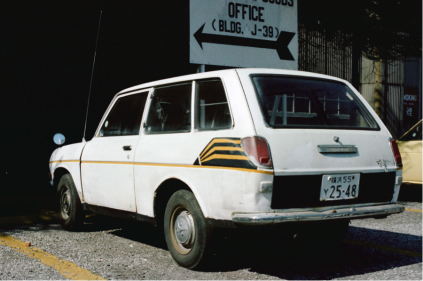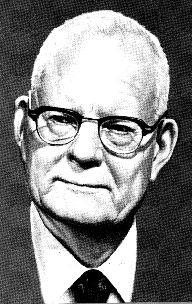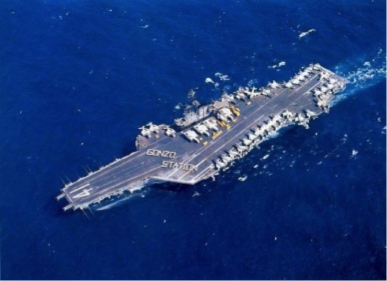Rice Burners

At some point I know we need to address the Japanese imports. Like the Germans, who emerged from the ashes of World War Two to produce quality cars like the legendary Mercedes line, the Audis and Bimmers, the Japanese did something even more fundamental- they literally transformed the American car market, and occasionally record sales in North America that top the production of the Big Three.
Or Big Two, whatever they are at the moment.
I periodically rent Camrys and other low budget sensible Japanese cars from Mr. Hertz and Ms Avis. I find them generally underpowered and anemic in the curve, and don’t like them much, but I certainly respect them. I have owned many more German cars- three Volkswagens and four Mercedes- but only one Rice Burner. It is pictured above, and therein lies the story. In this shot it is parked over at Building J-39, the personal property office on the naval base at Yokosuka, Japan, south of Yokohama and the vast sprawl of Tokyo.
My son is there now, so I have been thinking about the times I spent on the Kanto Plain in the days when dinosaurs roamed the Ginza.
My ride at the time was a 1968 Toyota Publica, which was manufactured 1961 to 1978, and which incorporated the complete philosophy of W. Edwards Deming, the American engineer who made a significant contribution to Japan’s later reputation for innovative, high-quality products, and for its economic power. He is regarded as having had more impact upon Japanese manufacturing and business than any other individual not of Japanese heritage.

(Dr. W. Edwards Deming. Photo Wikipedia).
The Japanese economic miracle stems in part from their ability to incorporate elements of other cultures and make them uniquely theirs. Deming’s lecture to the Daibatsu leadership in 1950 summed it up like this:
1.That the problems facing manufacturers can be solved through cooperation, despite differences.
2.Marketing is not “sales,” but the science of knowing what people who buy your product repeatedly think of that product and whether they will buy it again, and why.
3.That In the initial stages of design, you must conduct market research, applying statistical techniques for experimental and planning and inspection of samples.
4.And you must perfect the manufacturing process.
The Publica was a case in point. Conceived as a family car to fulfill the requirements of the “national car concept,” it was the smallest Toyota car during that period. It came in several flavors of two-door vehicles, including the base sedan, convertible, pickup and station wagon.
The design concept stipulated that the Publica have a maximum speed over 62 mph, weigh below 882 pounds, and drink fuel in a parsimonious manner, getting more than sixty miles a gallon at 37 mph on a level road and not in a benjo ditch. It was also supposed to be rugged, not requiring major repairs for the first hundred thousand miles.
I can’t tell you much about the engineering, since I never did change the oil or buy a new battery for the rugged little car. But it was a great way to get around.
The name “Publica” was chosen with reference to the English phrase “public car,” sort of like Uncle Adolf’s goal for the original VW Beetle. Unfortunately, due to the lack of exact distinction between the “l” and “r” consonants in the Japanese language, the name can be sometimes misinterpreted as something closer to “paprika, and is transliterated “パブリカ” in Katakana, or literally paburika.
I ran across the following in my digital files the other day. It is from 1979, the year the Soviets went into Afghanistan, and a couple minutes after we got back from the Indian Ocean and those whacky Iranians and their crazy Ayatollah. I have changed nothing to protect the innocent.
“It had been a busy week, and we were leaving again soon. It meant there was madness in the air, the madness that went with the going-to-sea, maybe going-to-war mind set. In the grips of that, we found our heroes enjoying their last hours of liberty with gusto.
They had found themselves delivered back to the tender mercies of Ma Midway (CV-41) after a remarkable line period. A busy workday on Friday, hauling gear up the ladders and into Ready Room Two. It could have been a night for a nice dinner and quiet contemplation of the rigors to come.
But Fridays are The Night at the Officer’s Club at Atsugi Naval Air Station, and thus it was time for a pre-disco dining extravaganza out at Ruth’s house. Ruth is a Navy Nurse, and she is a very nice person who takes care of Her Boys. Gaijin women who are not already attached to someone are a rarity on the Kanto Plain, which helps account for the beauty magnification factor. West of Hawaii, 5’s become 8’s, and 7’s become 10’s.
Fact of life. Ruth handles it well, though, and has adapted to the situation by more or less adopting us as her own personal fighter squadron, which can be a useful thing for a single woman.
She feeds us and leads us around for our own protection. She is a queen, she knows it, and treats her subjects with an even hand. Neat lady. What’s more, with her hefty nurse’s Basic Allowance for Quarters, she can live off-base out by the Hayama resort on the Sagami-wan, in a little house halfway up a hill. It has a splendid view, made the more so by our constant exposure to the gray steel windowless walls of my current abode. It is a general delight to be there.
This night the pre-Disco meal was chicken-stuffed crepes, hearty neo-Caesar salad and wonderful warm loaves of bread. The Japanese have great bread. They encountered it for the first time after the war, and discovered it had many uses. They even decided the American variety was too bland, and, in typical Japanese fashion, looked around for the best bread in the world and found it in France. Voila! Here it is! The ambiance was delightfully non-industrial, the food was outstanding, the wine divine. If anything, the bottle of rum that Scooter poured into the dessert daiquiris was superfluous. But good.
We have a variety of cars strewn up and down the hill. Cars are one of the little quirks here. First, you drive on the wrong side of the road. That is sorta cool.
Second, the cars are only worth the amount of Japanese Compulsory Insurance that remains on the policy. There is a public law that any vehicle over four years of age has to go through a rehabilitation and certification process that in effect costs more than buying a new car. They call it the Beautification Law.
Due to the Status of Forces Agreement (SOFA), we are exempt from the law and we took full advantage of our special status.
Accordingly, if you see a trashed-out car hurtling down Telephone Pole Road headed for Yokohama, you can be sure it is one of us. I own a clapped-out1970 Toyota Publica mini-wagon with three months left on the policy, making it worth exactly 42,000 yen. I had artfully painted the squadron tail flashes on the sides. Although you could see the roadway through holes in the floorboards, I considered it a beauty.
I have been stashing the little gaijin-mobile over at Ruth’s during our at-sea periods. It has an old battery that has a tendency to go dead as a doornail. So as our group was leaving the house I enlisted the hearty bodies of L.P., Jambo, Space, Splash, Scooter, Scotty, and Nasty in levitating the little econo-box out of the driveway, bouncing it backwards over the curb.
“Cut the wheel! Cut it hard port!” someone shouted. I wondered if they were talking to me….
A near run into the benjo ditch on the other side of the road, a quick transition, and I almost hit L.P’s 911 Porsche Targa. He had brought it over with his household goods with the idea of selling it on the local economy.
The Japanese love hot cars. Given the fact that traffic moves about five miles an hour during the day, it is amusing to watch the Jags and Mercedes creeping along. I decided a look behind might prove helpful as I navigated backwards down the steep hill. The trick was to get the thing rolling and pop the clutch, using the motion of the wheels to turn the engine.
Splash stayed with me almost the whole way down the hill, till I figured out it was just not going to start in reverse. I swerved into the curb and got it rolling forwards. I jammed it into second gear with my left hand and slipped my foot of the clutch. Well alright! The little monster started right up. I put the clutch in, kept the revs up, and hoped it wouldn’t die before I ran out of incline. Splash watched me disappear around the corner, about a half-mile downhill from his car.
“Hey, thanks Splash!” I yelled into the slipstream, “See Ya!”
I reached the traffic light at the bottom on the hill and stopped. It was red, and it was the right thing to do so I pulled over, foot on the gas, way short of the white line so as to have a fighting chance if the car crapped out. Space’s patented Space Shuttle van pulled up next to me. Scotty leaned out the passenger side and inquired if it was O.K.
“No sweat” I replied, about the same time the Nasty-mobile showed up and intentionally read-ended them. I saw the impact push the van about five feet down-slope. Space crammed it into reverse and hit the gas. Nasty sort of got pushed back uphill. Tires were smoking on the wet pavement, and the sound of the vehicles rubbing metal was real interesting.
I noticed Ruth’s horrified face in the passenger side of Nasty’s car. The light changed, Space went into first and roared off toward Atsugi. Nasty appeared to take it as a challenge and vanished in pursuit. I had to keep the revs up anyway, so what the hell….
We joined the frantic procession of normal traffic out on the highway. The road is narrow, as they all are in the Kanto Plain, and has steep open benjo sewers on each side. This doesn’t keep the locals from driving at breakneck speeds and performing outré maneuvers.
About the only thing it does do is keep them from driving drunk. You see, up till about fifteen years ago, drunkenness was a perfectly legal excuse for accidents.
Unfortunately, with the onset of mass access to cheap reliable cars, the massive casualties this policy encourages made it obvious that this remarkable notion had to give way to a more rational approach. As they so often do, once the Japanese make a decision they make a tough one. Even a beer – a single beer – will make you legally drunk. Should you cause an accident, or hurt someone, you may as well throw away the key.
Unfortunately, we were drunk Yankees, driving $175 cars, in a toy-sized land.
And it was off to the races. My first indication of this was Jambo flying by into oncoming traffic. He cut off a taxi and gained the lead. We rounded a bend, the line slowed down, and out of nowhere flashed a yellow Porsche 911, beating out the entire crowd and disappearing into a curve. This was an outrage too great to be borne …. it was pandemonium on the roadway …. the drivers were flying their aircraft, unconscious of the civilian life around them. We approached the first light on the way into town. Red. The racers were in line astern. Oh my goodness…I saw the green station-wagon’s back up light go on; in an inexorable chain reaction the cars bumped, jumped, and began to move toward my grill…the Space Shuttle into first!
Tires smoking, the line begin to move out into the intersection … the taxi behind me is keeping his distance … the light goes green and the race is on … it’s a cacophony of straining water pumps, abused gear boxes, over-revved little engines.
I am working with my handbrake only, to avoid taking my foot off the accelerator …. Around a downward curving turn, into another red light …. the Porsche stops …. the Jambo Special goes left, the Nastymobile to the right, drifting through the red signal with tires burning …. past two amazed Japanese policemen …. Oops …. I try to look inscrutable …. a crowd of pedestrians are bent over in amazement …. their mouths are beginning to work as the signal changes …. see ya! …. the racers roar down the narrow Ginza …. hard port! A light, hard brake, then onto R-16, four lanes and it is all guts and drag-racing technique. The last quarter mile to the gates of the Atsugi Naval Air Station…. hard starboard and into the chicane …. I stop the car, dim my lights, and the Marine on duty salutes me. I turn on the lights, turn right and follow the slow procession up to the Club.
We park the cars giggling like the drunken idiots we undoubtedly are. A leisurely stroll up to the doors where I can hear the sound system blaring some repetitive beat. On the way in I see one or the guys from Attack Squadron 56.
“Hey Vic” says one of them. “How’s it going?”
“Oh you know” I say with a negligent wave, “There just ain’t nothing to do in Japan.”
“Yeah,” said Jambo. “Except for maybe fifteen years if you get caught.”

Copyright 2014 Vic Socotra
www.vicsocotra.com
Twitter: @jayare303
